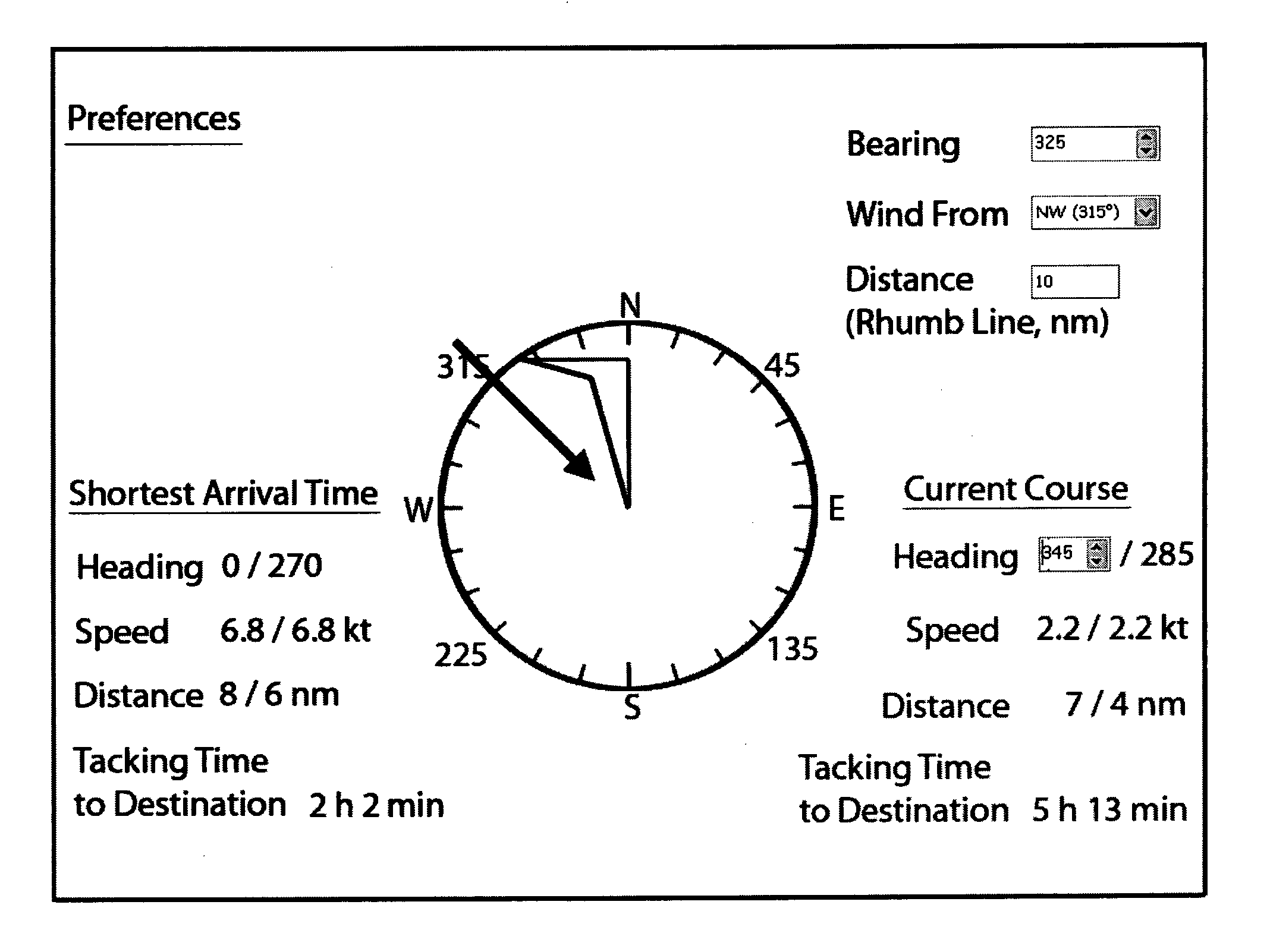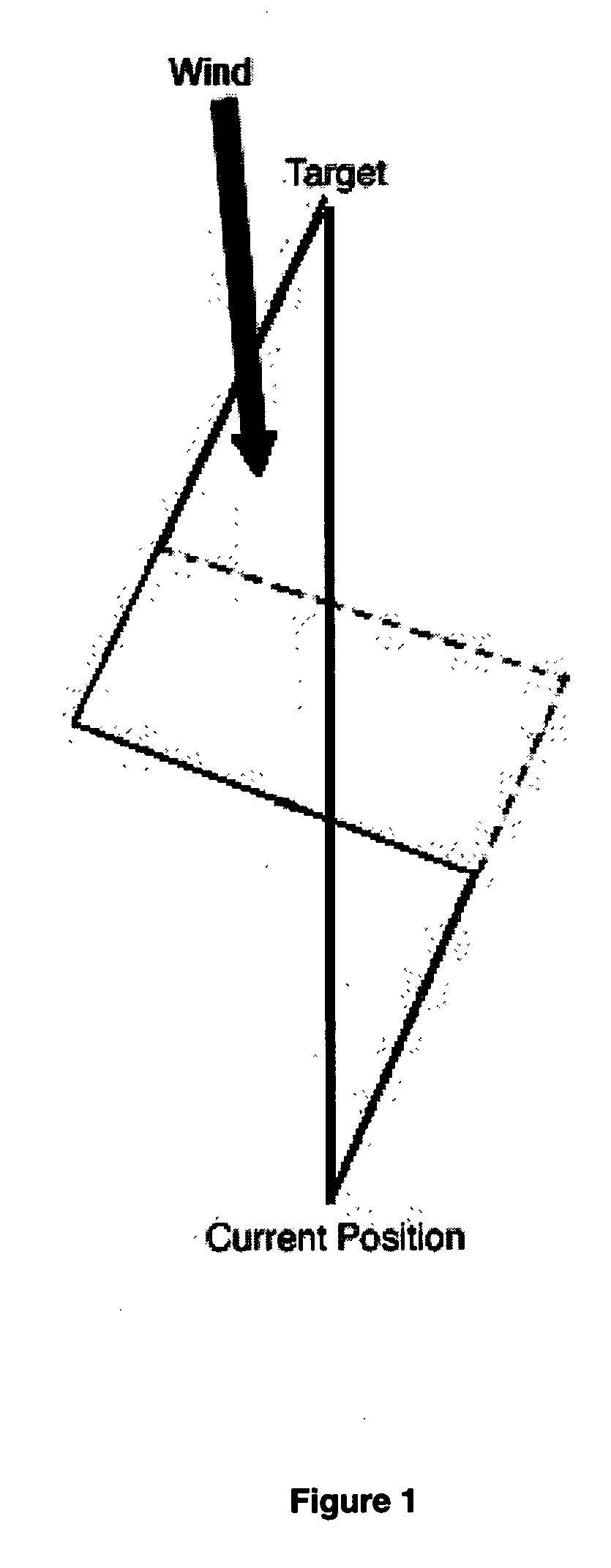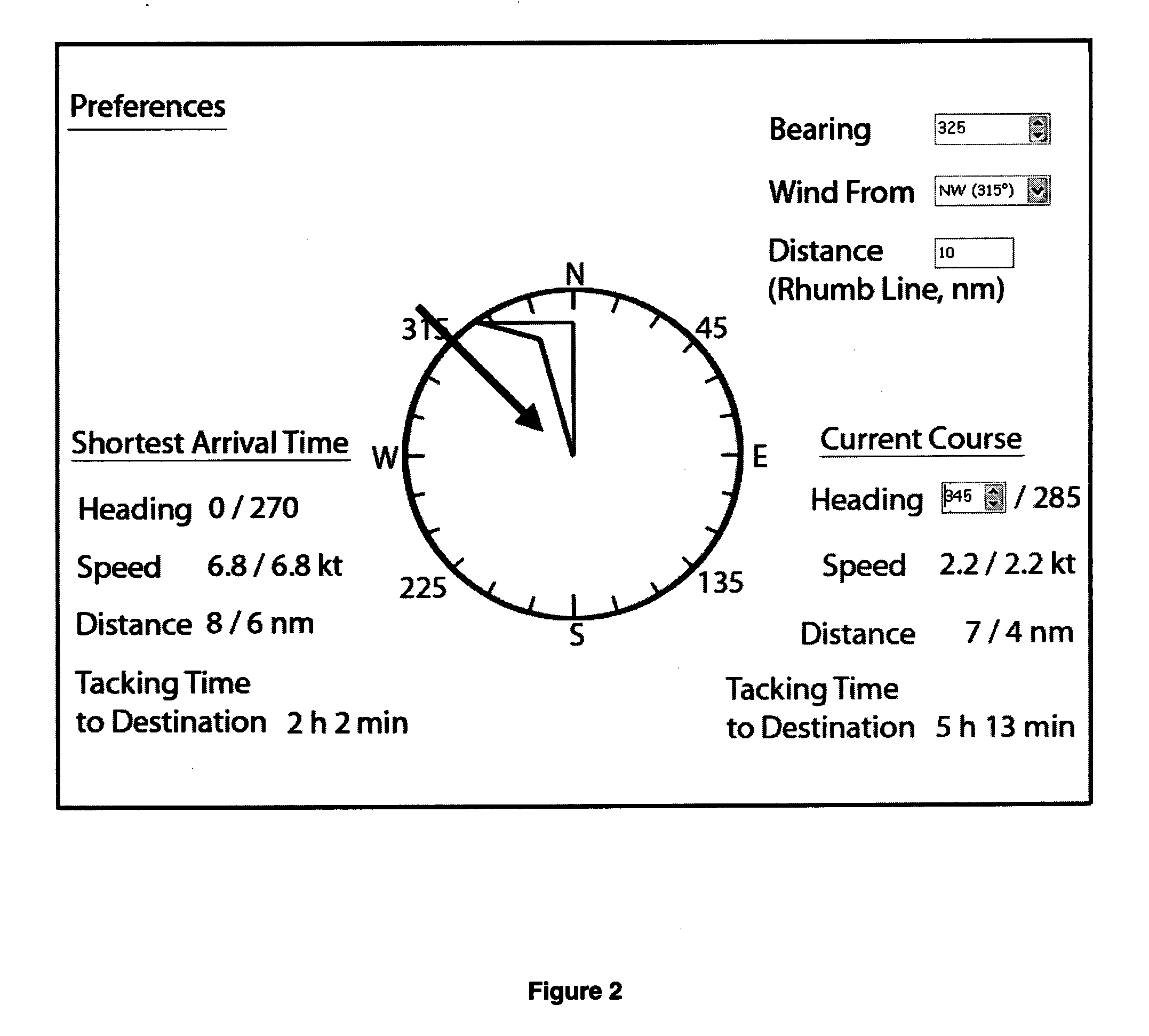Navigational planning and display method for the sailor's dilemma when heading upwind
a navigational planning and display method technology, applied in the direction of position fixation, navigation instruments, electric devices, etc., can solve the problems of little wind power, little if any clues, and the sailboat cannot head straight into the wind, so as to reduce the tacking time to the destination, the optimal sailing direction is quickly determined.
- Summary
- Abstract
- Description
- Claims
- Application Information
AI Technical Summary
Benefits of technology
Problems solved by technology
Method used
Image
Examples
Embodiment Construction
[0024]Placing all of the calculations and comparisons in a software program provides a precise way to determine the optimal heading to minimize Tacking Time to Destination. While this can be strictly numbers and text, the software could also have a graphical user interface such as showing routes on a chart display, on an aerial photo, on a GPS chartplotter or within a navigable 3D scene model—any of which could illustrate the directions, speeds and distances involved. A preferred embodiment is shown in FIG. 2, where the directions are shown on a compass face. In this type of software it is possible to give the user the option of specifying the graphic used in the background such as a compass or a chart, for example. The preferences can be set for North Up or for Heading Up if the routes are displayed. On the compass display, the user's location is assumed to be at the center of the compass. The destination is indicated by a large dot on the edge of the compass. The direction the win...
PUM
 Login to View More
Login to View More Abstract
Description
Claims
Application Information
 Login to View More
Login to View More - R&D
- Intellectual Property
- Life Sciences
- Materials
- Tech Scout
- Unparalleled Data Quality
- Higher Quality Content
- 60% Fewer Hallucinations
Browse by: Latest US Patents, China's latest patents, Technical Efficacy Thesaurus, Application Domain, Technology Topic, Popular Technical Reports.
© 2025 PatSnap. All rights reserved.Legal|Privacy policy|Modern Slavery Act Transparency Statement|Sitemap|About US| Contact US: help@patsnap.com



